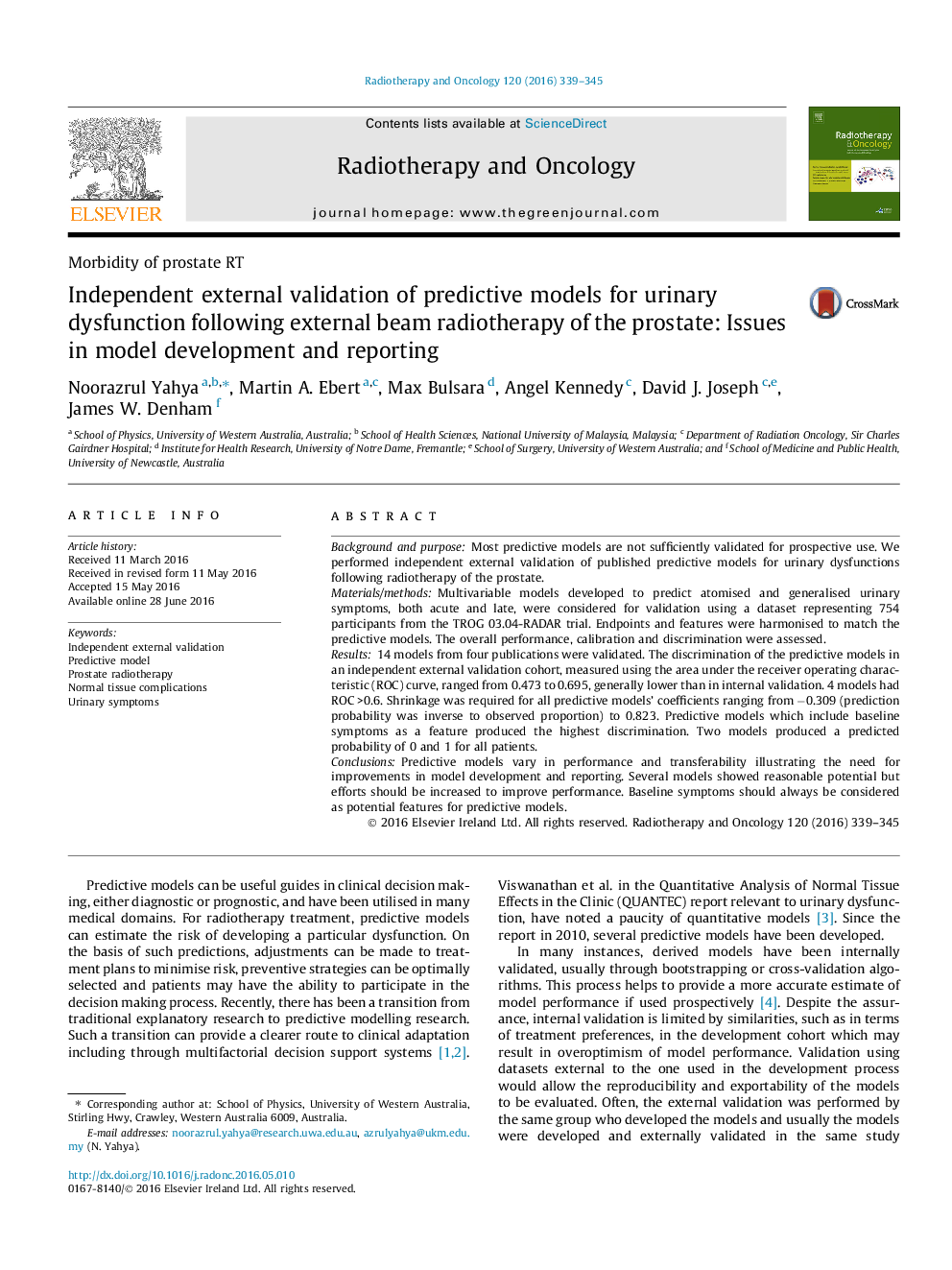| Article ID | Journal | Published Year | Pages | File Type |
|---|---|---|---|---|
| 5530038 | Radiotherapy and Oncology | 2016 | 7 Pages |
Background and purposeMost predictive models are not sufficiently validated for prospective use. We performed independent external validation of published predictive models for urinary dysfunctions following radiotherapy of the prostate.Materials/methodsMultivariable models developed to predict atomised and generalised urinary symptoms, both acute and late, were considered for validation using a dataset representing 754 participants from the TROG 03.04-RADAR trial. Endpoints and features were harmonised to match the predictive models. The overall performance, calibration and discrimination were assessed.Results14 models from four publications were validated. The discrimination of the predictive models in an independent external validation cohort, measured using the area under the receiver operating characteristic (ROC) curve, ranged from 0.473 to 0.695, generally lower than in internal validation. 4 models had ROC >0.6. Shrinkage was required for all predictive models' coefficients ranging from â0.309 (prediction probability was inverse to observed proportion) to 0.823. Predictive models which include baseline symptoms as a feature produced the highest discrimination. Two models produced a predicted probability of 0 and 1 for all patients.ConclusionsPredictive models vary in performance and transferability illustrating the need for improvements in model development and reporting. Several models showed reasonable potential but efforts should be increased to improve performance. Baseline symptoms should always be considered as potential features for predictive models.
